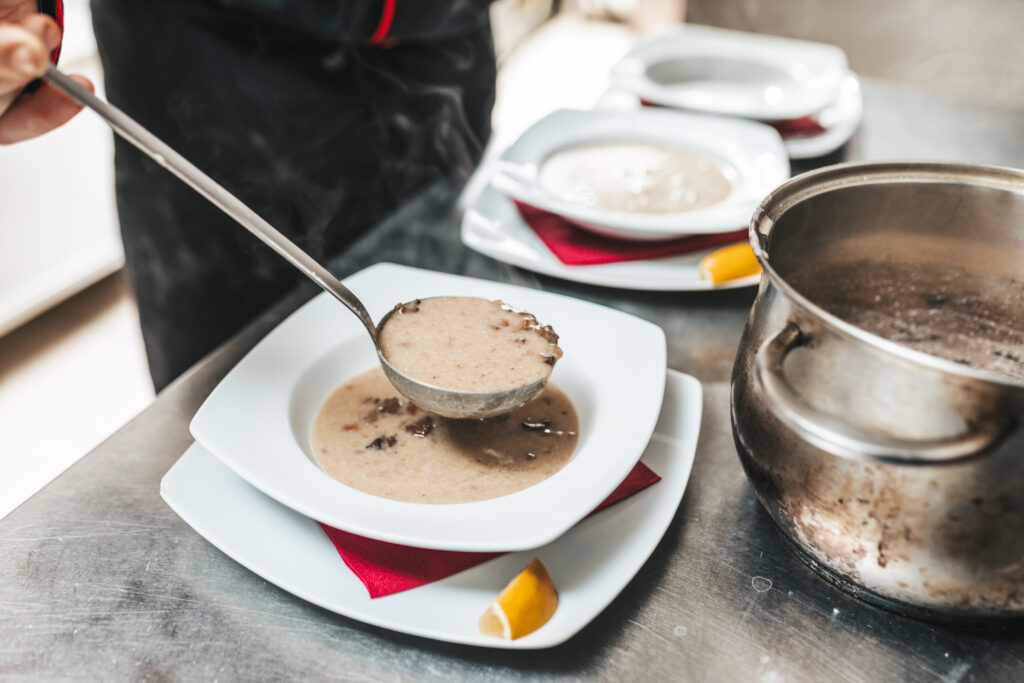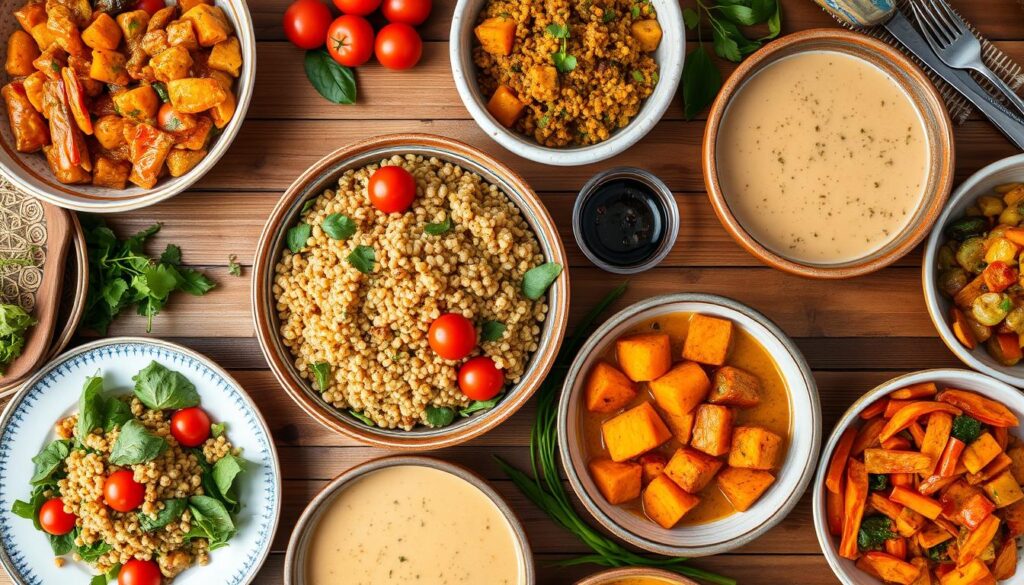Korean cuisine offers a rich tradition of plant-based cooking, particularly through temple food, which has been entirely vegetarian for centuries. The complex flavors and thoughtful preparation methods of Korean cooking provide an excellent foundation for creating authentic vegan dishes that honor traditional techniques while embracing modern dietary preferences.
Understanding Korean Cooking Principles
Korean cuisine relies on a balance of flavors and textures, incorporating five primary tastes: salty, sweet, sour, spicy, and umami. This harmonious approach creates deeply satisfying dishes that can be successfully adapted to vegan preparation while maintaining their authentic character.
Essential Ingredients
The foundation of Korean cooking begins with a carefully curated selection of ingredients. These form the basis of the cuisine’s distinctive flavors:
Gochugaru (Korean red pepper flakes) provides the characteristic heat in many Korean dishes. This ingredient offers a complex flavor profile that distinguishes it from other types of red pepper.
Doenjang (fermented soybean paste) delivers deep umami notes essential to Korean cooking. This traditional ingredient creates richness in vegan dishes that might otherwise rely on animal products.
Fundamental Techniques
Several key techniques distinguish Korean cooking and require careful attention for authentic results:
Fermentation plays a crucial role in developing complex flavors. Understanding the principles of fermentation enables the creation of traditional items such as kimchi and pickled vegetables while maintaining vegan standards.
Temperature control during cooking and serving contributes significantly to the success of Korean dishes. Many items require specific serving temperatures to achieve their optimal taste and texture.
Essential Vegan Korean Dishes
Several traditional Korean dishes naturally lend themselves to vegan preparation:
Temple-Style Kimchi This traditional preparation omits fish sauce and shrimp paste while maintaining the complex flavors characteristic of kimchi. The fermentation process develops deep umami notes without animal products.
Japchae This beloved noodle dish adapts beautifully to vegan preparation. Sweet potato noodles combine with vegetables and mushrooms to create a satisfying main course or side dish.
Banchan Preparation
The array of small side dishes (banchan) that accompany Korean meals offers numerous opportunities for vegan creativity:
Namul These seasoned vegetable dishes showcase the natural flavors of their ingredients while incorporating traditional Korean seasonings. Various preparation methods ensure textural interest.
Pickled Vegetables Quick-pickled and fermented vegetables provide essential acidic notes that balance richer dishes while offering probiotic benefits.
Main Course Options
Several substantial dishes form the centerpiece of Korean meals:
Doenjang Jjigae This hearty stew, traditionally made with anchovy stock, can be successfully prepared using mushroom broth while maintaining its characteristic depth of flavor.
Bibimbap This rice-based dish combines various vegetables with gochujang sauce, creating a satisfying meal that naturally accommodates vegan preparation.
Sauce Foundations
Understanding key sauce preparations enables authentic flavor development:
Gochujang-Based Sauces These spicy-sweet preparations form the foundation of many Korean dishes. Vegan versions maintain traditional flavor profiles while omitting animal products.
Sesame-Based Dressings These versatile sauces combine toasted sesame oil with other traditional ingredients to create complex flavor combinations.
Traditional Preservation Methods
Several preservation techniques contribute to Korean cuisine:
Fermentation Methods Understanding traditional fermentation enables the creation of authentic preserved vegetables and sauces while maintaining vegan standards.
Drying Techniques Proper drying of ingredients such as mushrooms and seaweed preserves them while concentrating their flavors.
Seasonal Considerations
Korean cuisine strongly emphasizes seasonal ingredients:
Spring Preparations Fresh greens and spring vegetables feature prominently in dishes during this season.
Winter Dishes Heartier preparations and preserved ingredients provide sustenance during colder months.
Modern Adaptations
Contemporary approaches to Korean cooking offer opportunities for innovation:
Alternative Proteins Modern ingredients such as tempeh and seitan can be incorporated while maintaining traditional flavor profiles.
Updated Techniques Contemporary equipment can facilitate traditional preparations while maintaining authenticity.
Professional Tips for Success
Several factors contribute to successful results:
Temperature Management Proper control of cooking and serving temperatures ensures optimal results.
Ingredient Selection Careful sourcing of authentic ingredients enables genuine flavor development.
Looking Forward
The integration of traditional Korean cooking methods with vegan dietary preferences demonstrates the adaptability of this sophisticated cuisine. Through careful attention to technique and ingredient selection, one can create authentic Korean dishes that satisfy both traditional standards and modern dietary requirements.
Share your Korean cooking experiences with #VeganKorean #KoreanTempleFood #PlantBasedAsian.






